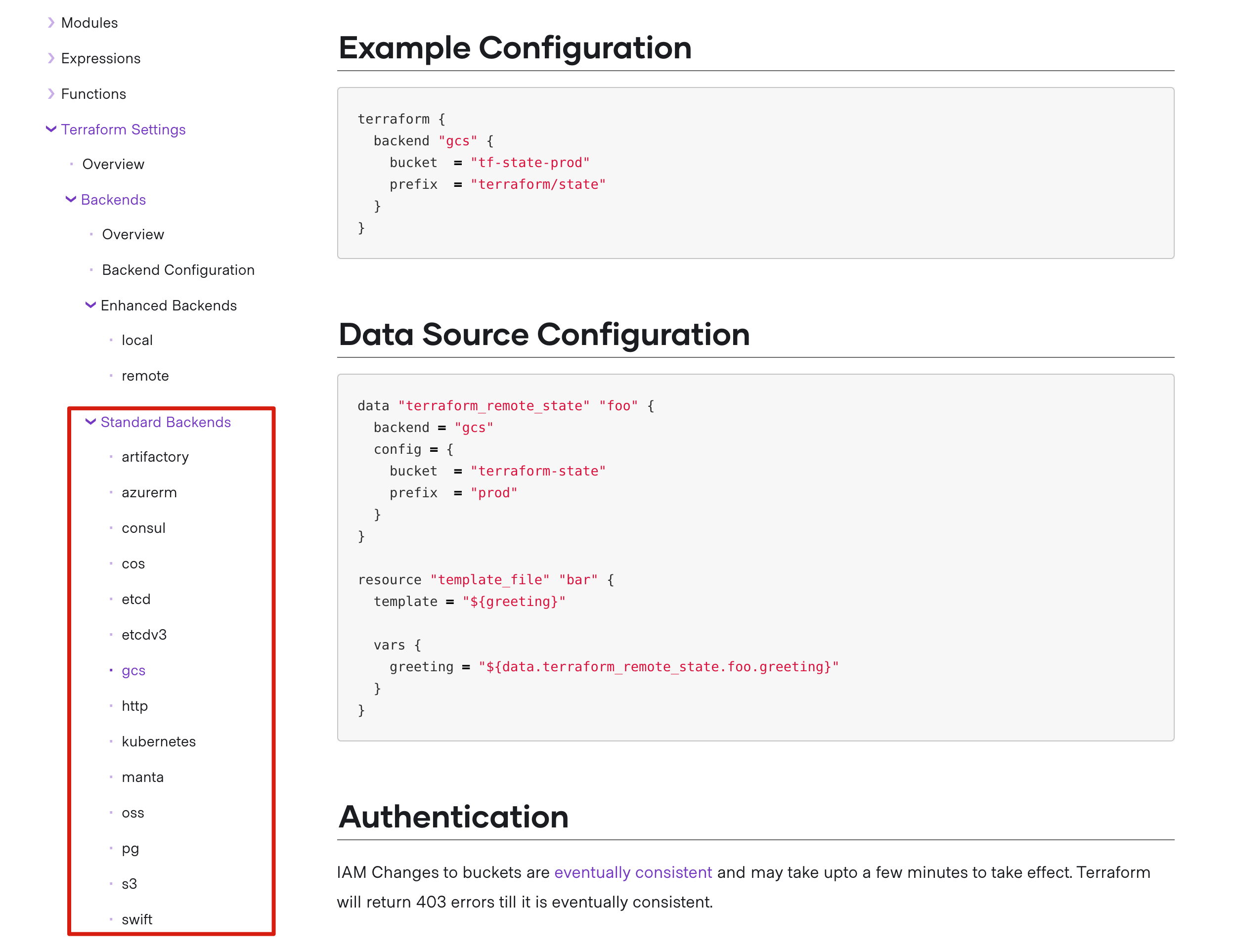My latest and complete articles are in Pumpkin speak slowly www.pkslow.com com , welcome to tea!
brief introduction
Terraform has been used in recent work. You can learn and record it. I hope it can help others.
Terraform series articles are as follows:
Terraform introductory tutorial, sample shows managing Docker and Kubernetes resources
Terraform plug-in Provider management, search, definition and download
Terraform State management to record changes
Terraform Module management, aggregation resource extraction and reuse
State is used by Terraform to manage infrastructure and configuration. It is the mapping of real resources and can also provide the efficiency of large-scale infrastructure platform. Its main function is to bind the relationship between remote resource platform (such as AWS) and local code configuration. To put it bluntly, it stores the status and existing appearance of various resources in the actual platform.
First, feel the State through an example
If the concept is difficult to understand, feel it through examples first.
The key configurations are as follows. For details, please refer to my code at GitHub:
provider "kubernetes" {
config_path = "~/.kube/config"
}
module "pkslow-nginx" {
source = "./nginx"
namespace = "pkslow"
applicationName = "pkslow-nginx"
image = "nginx:1.19.5"
replicas = 3
nodePort = 30201
}
apply first:
$ terraform apply module.pkslow-nginx.kubernetes_deployment.test: Creating... module.pkslow-nginx.kubernetes_deployment.test: Creation complete after 4s [id=pkslow/pkslow-nginx] module.pkslow-nginx.kubernetes_service.test: Creating... module.pkslow-nginx.kubernetes_service.test: Creation complete after 0s [id=pkslow/pkslow-nginx]
It creates two resources, where a new terrain will be generated in the current directory of the project Tfstate, which is the default state file. It is a file in Json format, which stores the status of the new resources created by apply, such as name, attribute, IP, etc.
At this time, if we apply again, nothing will be generated. Because the status file is the same as the actual infrastructure and the configuration has not been changed, it can be considered that the configuration is the same as the actual and does not need to be changed:
$ terraform apply No changes. Your infrastructure matches the configuration.
I change the NodePort to 30301, and then apply again:
$ terraform apply Plan: 0 to add, 1 to change, 0 to destroy. module.pkslow-nginx.kubernetes_service.test: Modifying... [id=pkslow/pkslow-nginx] module.pkslow-nginx.kubernetes_service.test: Modifications complete after 0s [id=pkslow/pkslow-nginx]
You can see that it changes only one of the two resources.
When deleting resources through destroy, you also need to read the status file. If the status file is lost, it cannot be deleted normally.
$ mv terraform.tfstate terraform.tfstate.bak $ terraform destroy No changes. No objects need to be destroyed. Either you have not created any objects yet or the existing objects were already deleted outside of Terraform. Destroy complete! Resources: 0 destroyed.
If there is a corresponding status file, it will be deleted according to the status file:
$ terraform destroy Plan: 0 to add, 0 to change, 2 to destroy. module.pkslow-nginx.kubernetes_service.test: Destroying... [id=pkslow/pkslow-nginx] module.pkslow-nginx.kubernetes_service.test: Destruction complete after 0s module.pkslow-nginx.kubernetes_deployment.test: Destroying... [id=pkslow/pkslow-nginx] module.pkslow-nginx.kubernetes_deployment.test: Destruction complete after 0s
View status
You can view the status through the command terrain state. The main commands are:
$ terraform state
Subcommands:
list List resources in the state
mv Move an item in the state
pull Pull current state and output to stdout
push Update remote state from a local state file
replace-provider Replace provider in the state
rm Remove instances from the state
show Show a resource in the state
The operation is as follows:
$ terraform state list module.pkslow-nginx.kubernetes_deployment.test module.pkslow-nginx.kubernetes_service.test $ terraform state show module.pkslow-nginx.kubernetes_deployment.test # module.pkslow-nginx.kubernetes_deployment.test: ......
productive practice
In production, status files are generally not saved locally, but are usually saved in cloud storage, such as etcd, gcp, oss, etc.

Such as gcs configuration:
terraform {
backend "gcs" {
bucket = "tf-state-prod"
prefix = "terraform/state"
}
}
Alibaba cloud oss configuration:
terraform {
backend "oss" {
bucket = "bucket-for-terraform-state"
prefix = "path/mystate"
key = "version-1.tfstate"
region = "cn-beijing"
tablestore_endpoint = "https://terraform-remote.cn-hangzhou.ots.aliyuncs.com"
tablestore_table = "statelock"
}
}